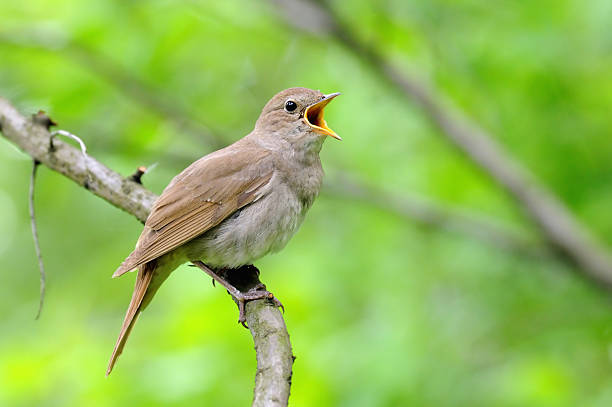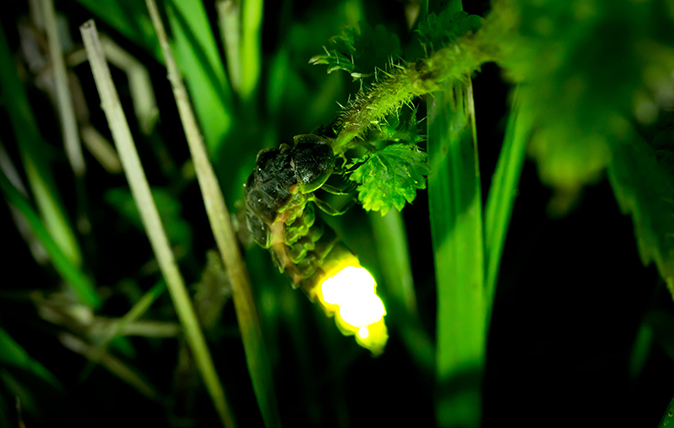There is a kind of magic that happens at dawn—a moment when the first light brushes across the trees, and the silence of night gives way to a chorus of melodies. The world awakens not to the hum of engines or the clatter of cities, but to birdsong. Each note, each trill, is a declaration of life.
From the deepest rainforests to the quiet corners of backyards, birds fill the air with music that transcends language. Their songs are not mere sounds—they are communication, love letters, and territorial claims wrapped in beauty. For humans, they stir emotion, memory, and awe. The song of a bird can soothe the restless heart, inspire poets, and remind us that the natural world is a living symphony.
Let’s journey through the world’s forests, meadows, and skies to meet ten of the most enchanting singers on Earth—the birds whose voices could rival orchestras, whose melodies make the world sing back.
1. Nightingale – The Poet of the Forest
If there were a crown for the most celebrated singer in the avian world, the nightingale would wear it with quiet grace. For centuries, poets, musicians, and lovers have been enchanted by its liquid, passionate song. The nightingale’s voice carries through the stillness of night, weaving notes that seem almost too intricate, too emotional, to come from a creature so small.
Found across Europe, Asia, and North Africa, the nightingale (Luscinia megarhynchos) is famous for its nocturnal serenades. Males sing with astonishing complexity—over 200 different phrases of whistles, gurgles, and crescendos. Their song can last minutes, sometimes hours, each note shaped with emotion.
What makes the nightingale’s song extraordinary is not just its beauty but its purpose. It is both love song and challenge—a musical duel to attract mates and establish territory. When two males compete, they exchange intricate improvisations, a lyrical battle of skill and endurance.
But beyond biology lies something profound. To the human ear, the nightingale’s song sounds like longing itself—a sound of yearning that has inspired countless works from Shakespeare’s sonnets to Keats’ immortal Ode to a Nightingale. Listening to one feels like hearing the soul of nature itself, raw and unguarded in the moonlight.
2. Wood Thrush – The Flute Player of the Eastern Woods
The wood thrush (Hylocichla mustelina) is a bird of ethereal sound. Its song rings through North American forests like the echo of a distant flute. Each phrase is a combination of clear, bell-like notes followed by haunting, flute-like overtones created by the bird’s dual voice box, or syrinx.
To many naturalists, the wood thrush’s song is the most beautiful in North America. Henry David Thoreau once wrote that hearing it was like “listening to a delicate instrument played by the fingers of the wind.”
What makes this song scientifically fascinating is its harmonic structure. The wood thrush can sing two notes simultaneously, creating natural chords. This rare ability gives its song an almost supernatural resonance—part melody, part harmony, like a duet performed by a single bird.
Tragically, habitat loss has made the wood thrush increasingly rare. Its decline means more than the loss of a species—it means the quieting of a voice that once defined summer mornings across the eastern United States. To hear it is to be reminded of the fragile, transcendent beauty that nature offers freely, yet we so easily take for granted.
3. Common Blackbird – The City Songbird
At dusk in European gardens, just as the light begins to fade, the song of the blackbird (Turdus merula) rises—a pure, lyrical sound that seems to fill every corner of the world with calm.
The blackbird’s song is a masterpiece of simplicity and feeling. Each male develops his own signature tune, rich with slow, fluted notes and gentle pauses. Some scientists call it “musical phrasing,” as if the blackbird composes small symphonies from the rooftops.
Unlike many wild birds, blackbirds have adapted beautifully to human life. They sing from lampposts, chimneys, and garden fences, turning cities into concert halls. Their song carries both strength and serenity, a reminder that nature can thrive even amid concrete and noise.
The blackbird’s voice also plays a role in art and literature—from The Beatles’ “Blackbird” to countless poems that equate its evening song with hope. It’s a familiar sound, one that seems to speak directly to the heart: a melody of ordinary magic, of beauty found in everyday places.
4. Hermit Thrush – The Spirit Singer of the Wild
If the wood thrush is a flutist, the hermit thrush (Catharus guttatus) is a mystic. Its song is soft, spiritual, and echoes like a whisper through the pine forests of North America.
The hermit thrush’s song begins with a clear introductory note, followed by complex, ethereal phrases that rise and fall like a hymn. It has inspired spiritual reverence among Indigenous peoples and awe among scientists who’ve studied its structure.
Intriguingly, researchers have discovered that the hermit thrush’s songs follow harmonic patterns similar to human musical scales. It uses intervals akin to those found in Western music—a mathematical precision that mirrors our own sense of melody.
When you hear a hermit thrush, it doesn’t feel like listening to an animal. It feels like hearing the Earth itself breathe. Its voice embodies stillness, purity, and transcendence—a reminder that music might be a universal language, shared between humans and the wild.
5. Lyrebird – The Master Mimic of the Southern Forests
Deep in the forests of Australia, a lyrebird begins to sing. At first, it’s birdsong—beautiful, layered, melodic. But then, you hear something else: a camera shutter, a chainsaw, a car alarm. The lyrebird’s voice is the most extraordinary instrument of mimicry in nature.
The superb lyrebird (Menura novaehollandiae) and its cousin, the Albert’s lyrebird, are living orchestras. They can imitate the calls of dozens of bird species, human-made sounds, and even musical instruments. A single lyrebird can hold a repertoire of over 20 minutes of continuous, perfectly imitated sounds.
Yet amid the mimicry lies true artistry. When performing courtship songs, male lyrebirds blend all these sounds into mesmerizing compositions—layered, emotional, and unpredictable. Scientists describe it as “vocal choreography,” a mix of creativity and instinct that rivals any human musician.
The lyrebird’s tail, shaped like a lyre, seems almost symbolic of its gift—a reminder that nature’s greatest art doesn’t hang in galleries but echoes through forests, alive and fleeting.
6. Song Thrush – The Repetition Artist
The song thrush (Turdus philomelos) may not have the fame of the nightingale, but its voice is no less enchanting. Its song is full of repeated phrases—three or four notes sung with delicate precision, then repeated like a poet emphasizing a line.
This repetition gives the song thrush’s melody a hypnotic rhythm. Each individual develops a personal collection of phrases, sometimes over a hundred variations. To stand in a spring meadow and hear several song thrushes singing together is to be surrounded by a living orchestra of echoing refrains.
The beauty of the song thrush lies in its clarity. Its notes are bright, clean, and joyful, rising above the rustle of leaves like drops of golden sound. In the early morning, when mist still clings to the fields, the song thrush’s voice seems to open the day like a prayer.
Its song has long been celebrated in literature—Thomas Hardy wrote that the song thrush’s voice was “joy illimited.” Indeed, listening to one reminds us that joy can be simple, spontaneous, and free.
7. European Robin – The Voice of Winter
The European robin (Erithacus rubecula) is not only a symbol of Christmas but also a year-round singer. While most birds grow silent in winter, the robin continues to sing through frost and snow, its song a spark of warmth in the cold air.
Its voice is gentle yet confident, full of silvery trills and tender pauses. Unlike the powerful thrushes, the robin’s song feels intimate, like a whispered conversation with the soul. Each note carries a fragile beauty, both cheerful and melancholy.
Robins sing to mark their territory, but their song also plays a role in maintaining pair bonds. Males and females sometimes sing duets, their voices intertwining like a soft dialogue.
Because they sing through the darkest months, robins have become symbols of resilience and hope. Their song tells us that even in the bleakest season, beauty endures. It’s a melody that speaks directly to the human spirit—the music of persistence and quiet courage.
8. Canary – The Golden Voice of the Islands
The canary (Serinus canaria), native to the Canary Islands, has been adored for centuries for its sweet, vibrant song. Domesticated since the 15th century, these birds were once treasures of nobility—kept in golden cages for their golden voices.
The canary’s song is full of rolling trills, liquid chirps, and cascading runs that sound almost like a flute crossed with a violin. Each bird’s tune is unique, shaped by genetics, environment, and the songs it hears during development.
Selective breeding over generations has produced canaries with specific vocal styles, such as the Spanish Timbrado and the German Roller, whose songs are so refined they are judged in competitions. But beyond the breeding and fame, the essence of a canary’s song lies in joy.
It is the music of sunshine, a melody that fills rooms with warmth. To listen to a canary sing is to feel light itself transformed into sound. It’s a reminder that art doesn’t require words—it only needs sincerity and song.
9. Mockingbird – The Virtuoso of Variation
In the American South, under starlit skies, a mockingbird begins to sing. What follows is not one song but many—an endless cascade of melodies borrowed from the world around it.
The northern mockingbird (Mimus polyglottos) is a living symphony of imitation. It can mimic over 200 different sounds, from other birds to frogs and even mechanical noises. But unlike the lyrebird, which mimics with precision, the mockingbird rearranges these sounds, turning imitation into creation.
Each male builds his repertoire through life, adding and refining songs. During breeding season, he may sing through the night, pouring out improvisations that seem as much art as biology.
Scientists believe the mockingbird’s elaborate song signals intelligence and stamina to potential mates. To humans, however, it feels like pure artistry—music born of endless curiosity.
Its song embodies freedom and reinvention, echoing the restless creativity of nature itself. When a mockingbird sings, it’s as though the world’s sounds have gathered in one voice, reshaped into something new and beautiful.
10. Shama Thrush (White-Rumped Shama) – The Tropical Maestro
In the lush forests of Southeast Asia, the white-rumped shama (Copsychus malabaricus) sings with a voice that seems made of silk. Its song flows effortlessly—clear, fluid, and richly melodious. Many bird enthusiasts consider it one of the most beautiful voices in the tropical world.
The shama thrush’s song includes whistles, trills, and mimicry of other birds. It sings with elegance and precision, adapting its tone to mood and circumstance. In captivity, it remains one of the most prized songbirds in Asia, where song competitions judge both range and emotional expression.
In the wild, its song serves a deeper purpose—defending territory and attracting mates through pure, musical mastery. Its fluid melodies ripple through the jungle canopy like sunlight filtering through leaves.
Listening to a shama sing feels like being transported into a dream—the air itself seems to shimmer. Its music bridges wildness and serenity, reminding us how art and instinct can become one.
The Science of Birdsong – Nature’s Musical Genius
Birdsong is more than beauty—it is biology turned to art. At its core, singing is communication, shaped by evolution to attract mates, defend territory, and strengthen social bonds. Yet in the process, nature has created one of the most exquisite forms of expression known to life.
Birds produce their songs using the syrinx, a unique vocal organ located where the trachea divides. Unlike human vocal cords, the syrinx can produce multiple notes simultaneously, allowing for harmonies and complex trills.
Neurologically, birds possess specialized brain regions for learning and memory. Young birds, like human children, learn their songs by listening to adults. This process, known as vocal learning, is rare in nature and shared only by humans, some whales, bats, and elephants.
Even more astonishing is the emotional dimension of birdsong. Studies show that certain birds experience hormonal and neural responses akin to pleasure when they sing—suggesting that for them, as for us, music may bring joy.
The Emotional Language of the Wild
When a bird sings, it is not merely performing—it is feeling. Each note carries instinct, emotion, and connection. A nightingale’s passionate trill, a robin’s winter whisper, a lyrebird’s comic mimicry—all are expressions of life’s vitality.
Humans have always heard themselves in these songs. We hear love, loneliness, joy, and hope. Our music, too, may be an echo of ancient birdsong—a continuation of nature’s eternal melody.
The Final Chorus
To stand in a forest at dawn and hear birdsong is to remember that the world is alive and speaking. Every note that rises from the trees is a celebration of existence—a reminder that even the smallest creatures create beauty beyond measure.
From the haunting voice of the nightingale to the radiant trill of the shama thrush, these ten birds teach us that music is not just human. It belongs to the Earth itself.
Their songs invite us to listen—to slow down, to breathe, to feel. For in the sound of a bird’s song lies everything: art, science, spirit, and the unspoken harmony that connects all living things.






